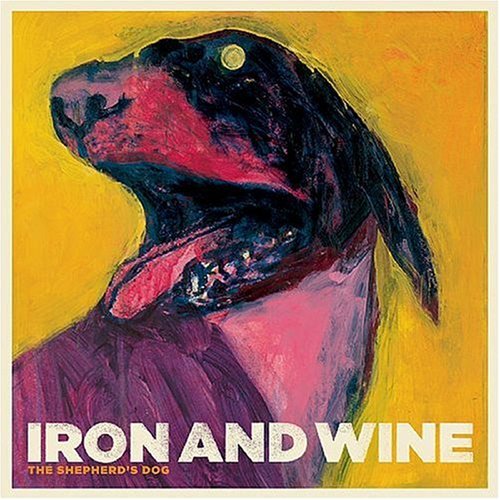Cinematographicus: "Seven Brides for Seven Brothers" (1954)

It is with utmost sincerity that I ask, "What the heck?" every time someone tells me that "Seven Brides for Seven Brothers" is their favorite musical of all time. In fact, I was at a party last Sunday when I heard a girl state this opinion, to which I retorted, "How many musicals have you SEEN?"
I'm sorry -- this is a decent movie, but by no means does it outshine "Guys and Dolls" (1955), "How to Succeed in Business Without Really Trying" (1967), "Newsies" (1992), "White Chrismas," (1954), or any of a number of many other musicals that have been produced! Honestly, has the person who rates this film so high been exposed to any other forms of non-contemporary movie pop culture? Holy Moses. Sometimes I feel like I'm part of a truly wicked and perverse generation.
For those few of us who aren't familiar with the plot, it begins with the Brawny man,
 mustachioed and flannelized, on the lookout for a woman to marry with no notice. Immediately the male audience is sucked in, for who doesn't want to find a hottie who can cook, clean, milk a cow, AND blindly jump into marriage with a total stranger, cutting through all the headache and confusion of courtship? Mr. Brawny sings "Bless Your Beautiful Hide," perhaps the greatest song in the entire movie, which never really lives up to this moment music-wise, though it makes a few valiant attempts. After finding and marrying the Swiss Miss girl, the Brawnies head out to the woods to live, because what is the most rational thing to do when a scruffy strangers asks you to marry him and go to the mountains with you?
mustachioed and flannelized, on the lookout for a woman to marry with no notice. Immediately the male audience is sucked in, for who doesn't want to find a hottie who can cook, clean, milk a cow, AND blindly jump into marriage with a total stranger, cutting through all the headache and confusion of courtship? Mr. Brawny sings "Bless Your Beautiful Hide," perhaps the greatest song in the entire movie, which never really lives up to this moment music-wise, though it makes a few valiant attempts. After finding and marrying the Swiss Miss girl, the Brawnies head out to the woods to live, because what is the most rational thing to do when a scruffy strangers asks you to marry him and go to the mountains with you?The new Mrs. Brawny is in for a surprise when she finds that her husband has six not-quite-as-burly brothers living with him, and she's supposed to feed and clean up after them all. Sexual frustration being piqued by a woman's introduction to their testosterone farm, they all decide to get themselves hitched, but only after they learn how to closet their burly ways in a group effort to guise themselves as gentlemen.
They collectively come back out of the closet about thirty minutes later (after an impressive scene - in which they win the attention of six women who serve no purpose than to be sex objects for the men - that involves some sincerely-amazing acrobatics and choreography), when they find themselves putting on a ballet for each other while desperately gripping their axes - symbolic of their frustrated attempts at being real men as they weakly chop at trees made of rubber.

This depressing - yet unintenionally-hilarious - number is a result of another no-brainer: the seven brothers decided to go into town and kidnap their six women because, heck, it worked with the Romans' Sabine women. In their defense, Mr. Brawny sang a very entertaining, toe-tapping number that made the whole plan sound simply delightful even to ME, detailing the entire plight of the Romans. Really, it's another great music number that's very convincing. Unfortunately, however, they discover that there's something called a "culture gap" that comes from a couple millenia's difference in time and half a globe's distance, which had them at the disadvantage. They were rejected and chastized by the ladies, and to make matters worse -- there was an avalanche that is preventing the women from being able to leave and the township from being able to rescue their daughters from six men who by now must surely have nothing decent left in their intentions.
I won't spoil the ending for you, but let's just say that there is a mass wedding involving angry fathers and shotguns. The image only confirms suspicions raised by the ballet number.
So why, you ask, am I not as thrilled by this movie as most of my peers seem to be? Is it the low production quality that involves painted backdrops and plastic foliage in every scene as opposed to real settings? Is it the objectifying of women, which apparently goes over the head of the ladies I know (yes, I know the women stand up to the men, but they are nonetheless objects to be gained, and it's made clear that despite the horrible actions of the brothers, they are still open to falling in love with them; plus, the movie is told almost entirely from the point of view of the men, because they are the psyche we need to relate with, according to the filmmakers)? Or is it just the fact that I hate that people expose themselves to so little of what's good in the film world and gloat that they've found the best that's out there (summing up the pop-culture opinion of my generation in general)?
Gee, I just can't place my finger on it. I like the movie, and I would own it if I found it for the right price, but it's so much slower and not as finely-produced as SO many other musicals out there. Please, if you're going to find yourself a favorite musical, do some research before settling on this one.
The next time I want to rant on a similar subject, I will be discussing the highly overrated "Singing in the Rain" (1952).














